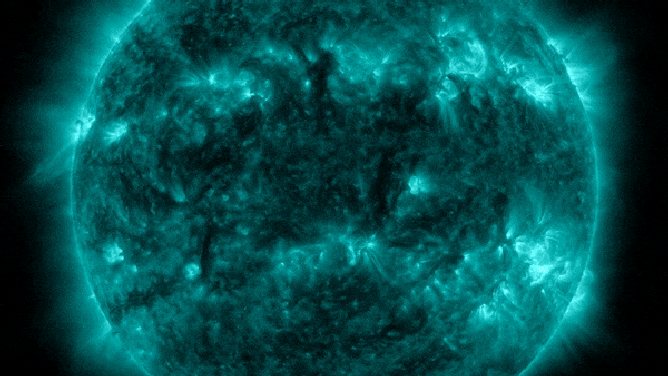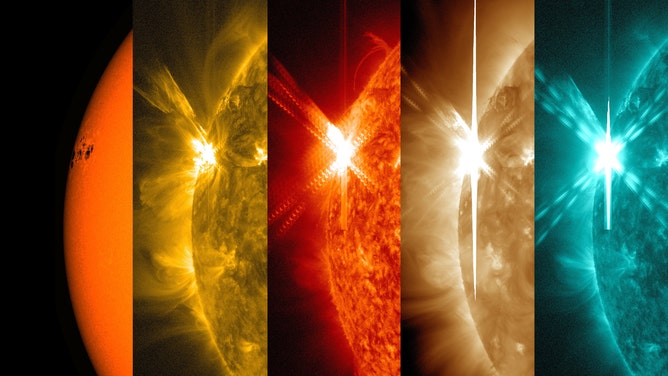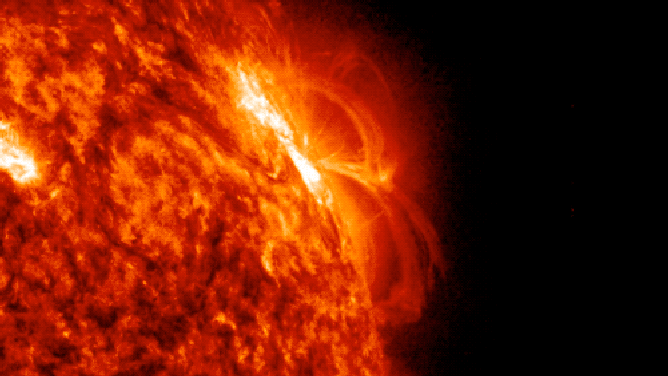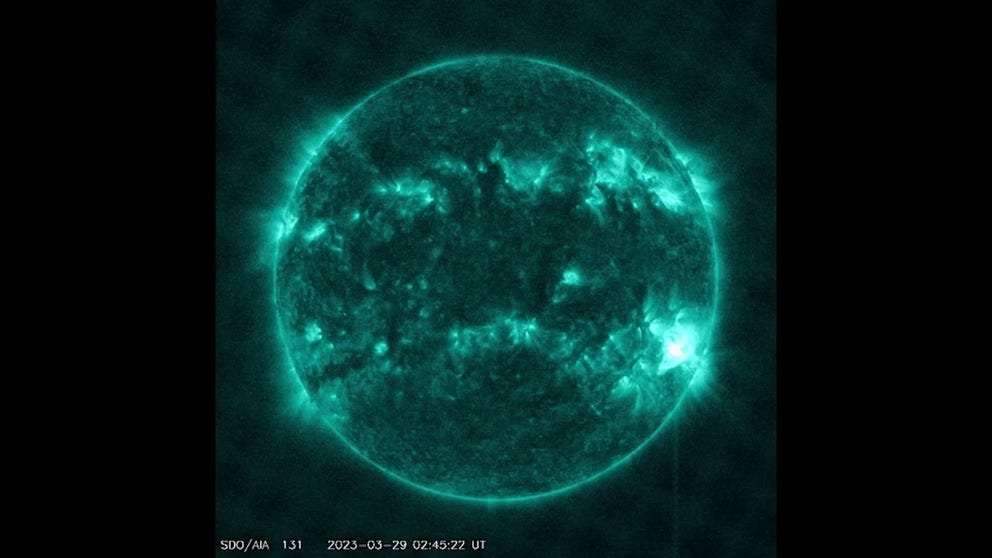Watch: Intense X-class solar flare erupts from the sun
The flare erupted on Tuesday at 10:33 p.m. ET and was classified as an X1.2 flare -- part of the highest classification of solar flares.
Watch: Intense solar flare erupts from the sun
Imagery from NASA’s Solar Dynamics Observatory captured imagery of a powerful solar flare bursting from the sun. (Courtesy: NASA SDO)
Imagery from NASA’s Solar Dynamics Observatory captured imagery of yet another powerful solar flare bursting from the sun.
The flare erupted on Tuesday at 10:33 p.m. ET. It was classified as an X1.2 flare, part of the highest classification of solar flares.
Colorized footage from SDO shows the solar flare popping onscreen as a bright white light on the southeastern region of the star.

NASA’s Solar Dynamics Observatory captured this image of a solar flare – as seen in the bright flash on the bottom right of the Sun – on March 28, 2023. The image shows a subset of extreme ultraviolet light that highlights the extremely hot material in flares and which is colorized in teal.
(SDO / NASA)
The sun has been extremely active over the past several months as it climbs farther toward the peak of its current 11-year sun spot cycle. This strong flare was the 7th such X-class flare already just in 2023, according to SpaceWeatherLive.com.
How do solar flares occur?
Solar flares occur when the motion of the sun’s interior contorts its own magnetic fields, NASA said.
When the magnetic fields snap back into place, they release vast amounts of energy into space. This occurs as a sudden flash of light, or a solar flare.
According to NASA, the energy released by a solar flare can equal the energy released by millions of 100-megaton hydrogen bombs exploding at the same time.

Images of a solar flare that show a different wavelength of extreme ultraviolet light, highlighting a different temperature of material on the sun. From left to right, the wavelengths are: visible light, 171 angstroms, 304 angstroms, 193 angstroms and 131 angstroms. Each wavelength has been colorized. May 5, 2015.
(NASA / SDO / Wiessinger / FOX Weather)
What happens during a solar flare on Earth?
Some of the energy emitted by solar flares accelerates high energy particles that can travel to Earth in tens of minutes, NASA said.
This can cause significant interruptions in our technology. According to NASA, flares and solar eruptions impact high-frequency (HF) radio communications, electric power grids and navigation signals.
In fact, NOAA's Space Weather Prediction Center issued an R3 (strong) High Frequency Blackout Event for Tuesday's solar flare. This designation forecast a temporary degradation or complete loss of HF radio signals on parts of the sunlit side of the Earth on the day after the flare.

A solar flare erupting on March 3, 2023. The image shows a subset of extreme ultraviolet light that highlights the extremely hot material in flares, and which is colorized in orange.
(Solar Dynamics Observatory / NASA)
Solar flares may also pose risks to spacecraft and be harmful to humans – particularly, astronauts.
On the brighter side, solar flares can also trigger brilliant displays of the Northern and Southern Lights.
